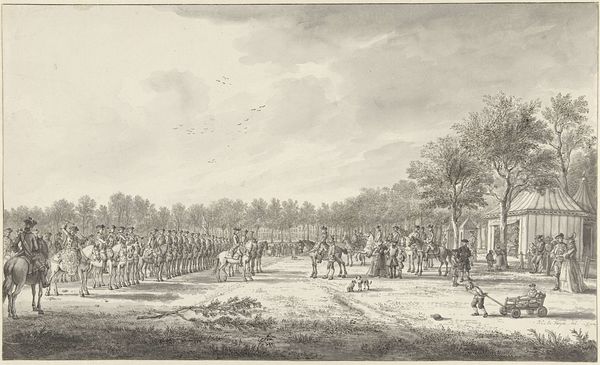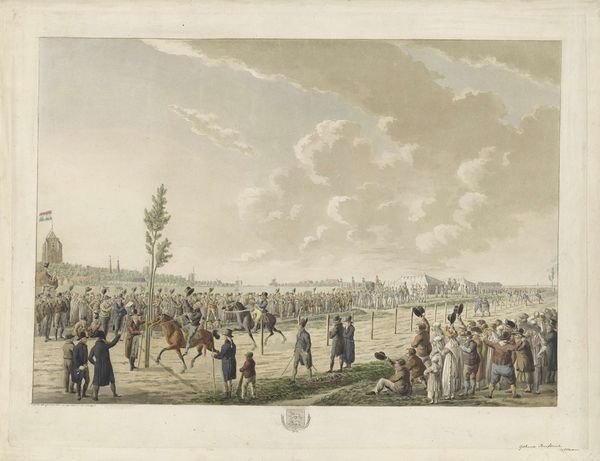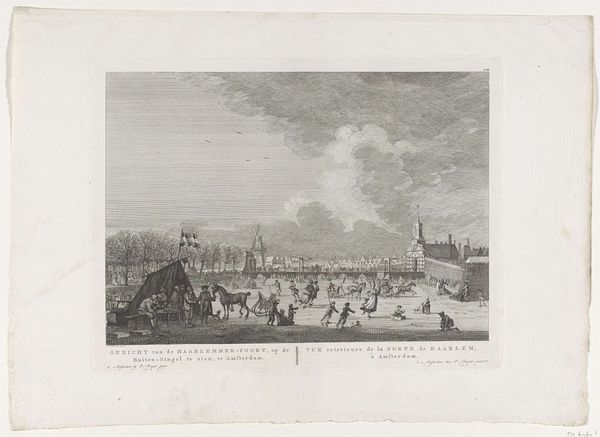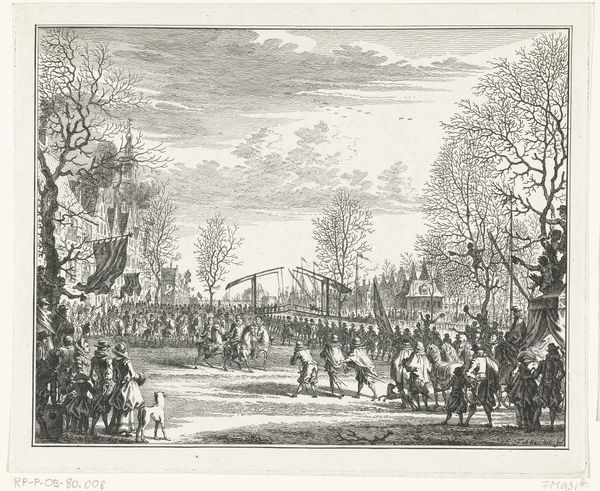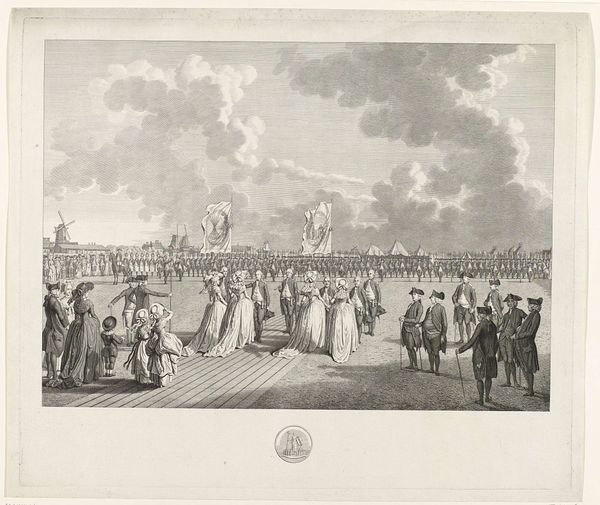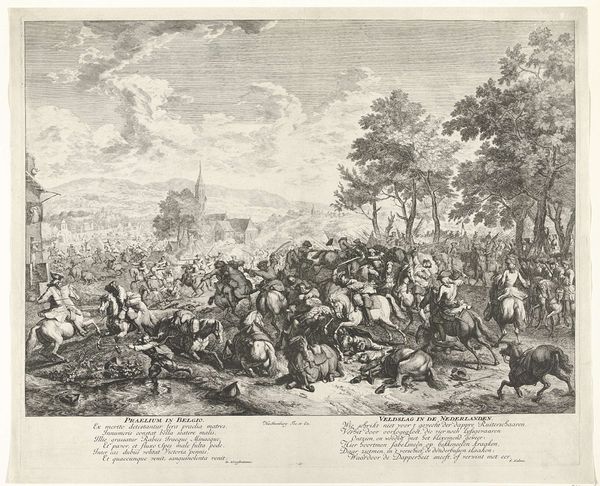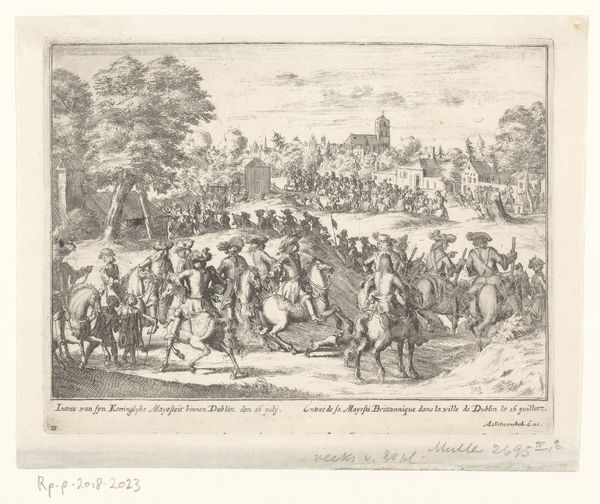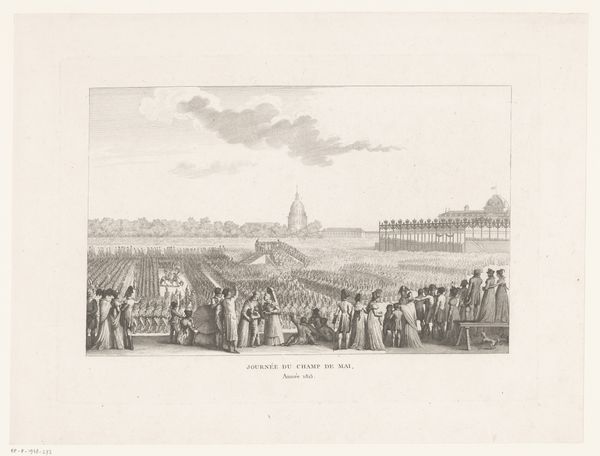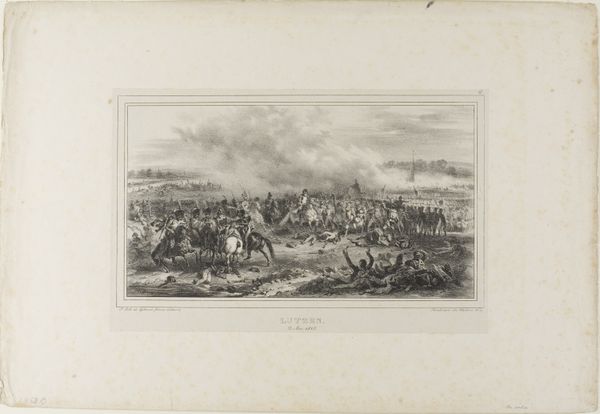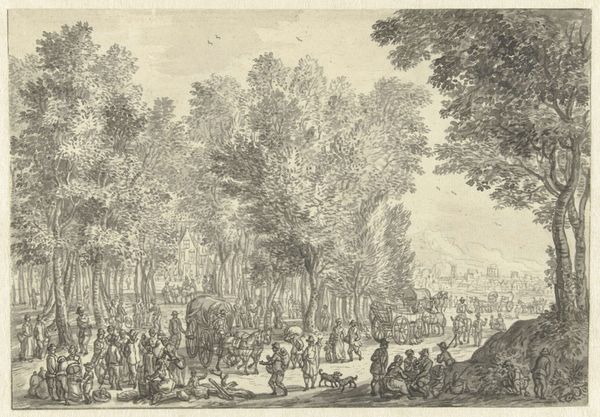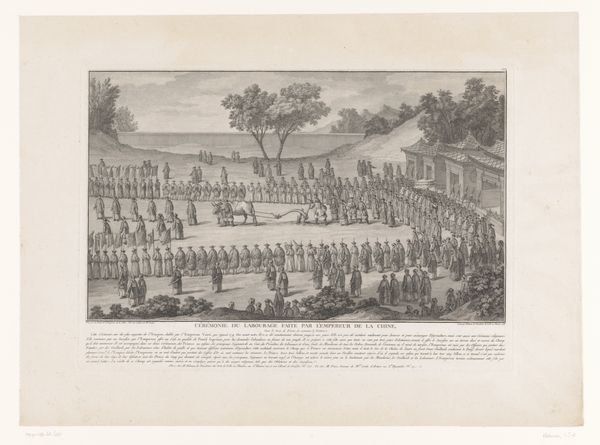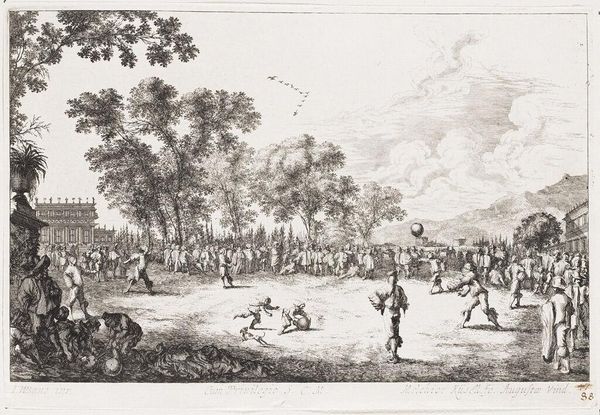
print, etching, engraving
#
ink paper printed
# print
#
etching
#
landscape
#
romanticism
#
genre-painting
#
history-painting
#
engraving
Dimensions: height 339 mm, width 483 mm
Copyright: Rijks Museum: Open Domain
Curator: This captivating print, entitled "Publiek gevecht," was created sometime between 1770 and 1814 by Jean François Janinet. It combines etching and engraving, a testament to the artistic printmaking practices of the era. Editor: My eye is immediately drawn to the central figures—the wrestlers themselves. There's a rawness to their struggle, a tangible energy that seems almost at odds with the otherwise orderly crowd surrounding them. Curator: Absolutely. Janinet captures a distinct social dynamic. What seems like a simple sporting event is very carefully posed within the complex political and societal context. The work invites commentary on power, on display, and who has the right to spectate. Think about where the people stand versus the fighters! Editor: The crowd does seem very purposefully arranged! Are there cultural connections to any classic ideals with which viewers may already be familiar? I wonder how wrestling serves as an analogy for larger social dynamics. Its symbols could suggest honor, struggle, or even violence. Curator: The history of these kinds of social wrestling contests gives rise to reflection, particularly on Romantic ideals and emerging nationalisms of the period. Athleticism was not just an entertaining spectacle; it reflected values and strength which a population sought in their leaders or which they believed would bind the public closer. It highlights that physical prowess could equate social legitimacy. Editor: I am seeing so much social anxiety and control on display! The dogs are even sitting down to observe politely. Was Janinet intentionally highlighting the constraints placed on society, perhaps? The setting—the ramparts of Berne—also add a layer of imposing societal order over a common event. Curator: Exactly. I find myself contemplating the enduring questions Janinet's print raises regarding the public and private spheres, about who gets to play and who must simply observe, how displays of strength reflect more subtle, more persistent power structures in the population. Editor: It’s so powerful how a scene so outwardly simple can unlock all these other trains of thought. It all encourages you to see things symbolically.
Comments
No comments
Be the first to comment and join the conversation on the ultimate creative platform.
